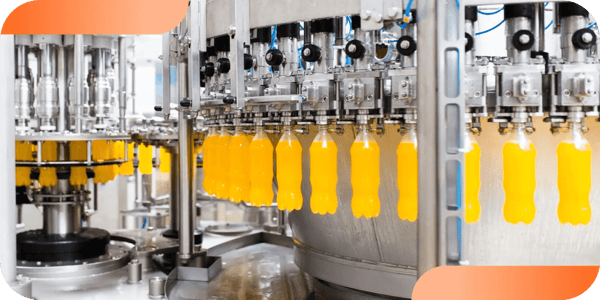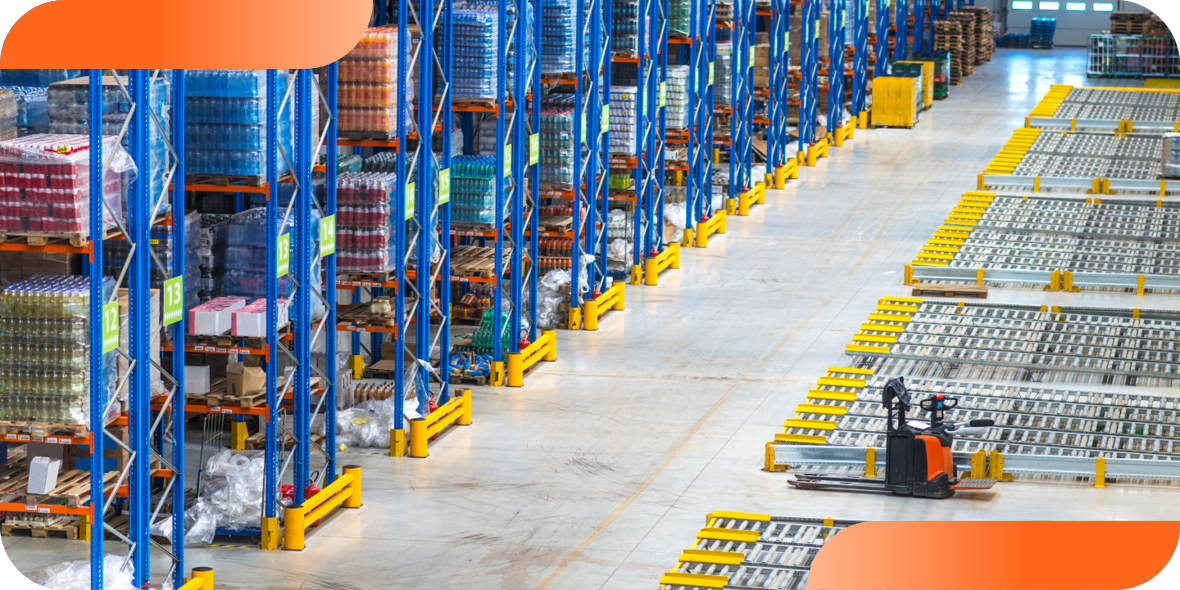Warehouse
Warehouse management in the food and beverage industry

A key challenge for companies in the food and beverage industry is maintaining low operating costs, given that they tend to sell large volumes with low profit margins. For an organization commercializing food and beverages, having its supply chain under close control is usually a priority given that resource outflows can represent a significant drop in profits.
Having a system that facilitates control of administrative and operating process of a company is crucial, an ERP (Enterprise Resource Planning) collects, saves, manages, and interprets the information generated by the different areas of a business. However, the needs of some companies exceed the capacity of an ERP.
ERP vs. Warehouse Management System
Organizations that sell food and beverages often benefit from the implementation of a Warehouse Management System or WMS, especially because it controls and generates information about each product received, stocked, packed, and shipped. In addition, it allows knowing the location of the inventory within the warehouse and its value. A Warehouse Management System enables the following functions:
- Visibility of warehouse processes
- Analysis and centralization of the information of each process
- Product movement tracking
- Problem identification
- Timely decision-making to send the correct products to the corresponding clients, in a timely manner.
Due to the amount of information generated by a Warehouse Management System, it is best to integrate it with a company's ERP, since the former receives information from the latter about purchase and sale transactions. A Warehouse Management System can work in standalone mode, that is, without being integrated, but this usually generates unreliable manual processes, due to inconsistencies in the information of both solutions.
A Warehouse Management System is often very useful for companies that sell food and beverages, because it can bring the following benefits to the operation of a company:
- Greater efficiency and simplified operations
- Savings in time and money
- Reduced sales time through automated processes and workflows
- Flexibility to adjust to new strategies to meet demand and adapt to changes in consumer behavior
- Reduction of loss due to expiration through close inventory control
- Faster and more accurate decisions based on centralized information, accessible to logistics managers
- Elimination of the need to outsource storage operations, which makes it easier to fulfill purchase orders.
Waste in the warehouse
Unlike companies in other industries, those that market food and beverages pay special attention to their supply chain processes, since their products are constantly at risk of damage, contamination or expiration. Therefore, the warehouses of these organizations usually take special measures for their merchandise, but the complex daily operations are far from facilitating compliance with these guidelines. Carelessness can lead to further waste, resulting in lost sales and reduced profit margins for the company. Warehouse Management Systems offer a wide variety of functionalities that prevent this from happening:
-
Putaway
A Warehouse Management System streamlines putaway in such a way that shortens travel through the warehouse and unloading time to reduce the risk of merchandise damage. This happens by increasing the productivity of the workforce, logically distributing the warehouse, and optimizing space. Additionally, it manages the arrangement of inventory according to temperature zones of the warehouse, its distribution, the demand patterns, and the obsolescence profiles of each product. -
Product traceability
It enables the traceability of products for the recall process, through the registration of verification codes or barcodes for each product and container. In this way, the company can track the origin and destination of the damaged lot. A fast and accurate recall avoids customer dissatisfaction and penalties for non-compliance with government regulations. -
Inventory control
Visibility into the productivity of each process is essential to protect products from damage or obsolescence, as delays and errors can result in lost batches. For a company that sells food and beverages, it is essential to have visibility of the arrangement of its merchandise, the movement of products within the warehouse, entrances and exits of the merchandise, etc. A Warehouse Management System offers this information and allows knowing the locations of the inventory, its value, and how it changes as the expiration dates of the products approach. Based on this data and with the system's recommendations on inventory policies, it is possible to manage the merchandise to avoid the loss of products due to damage or expiration and make the correct sales decisions. -
Workforce productivity
Assigning tasks to the workforce can become very complex, as there are many variables to consider in order for operators to be as productive as possible. A Warehouse Management System allows you to track the activities of the workforce and assign tasks to each operator, depending on their proximity to the location of the activity and respecting the predetermined limits of the warehouse. In this way, it is possible to achieve a more efficient division of tasks to reduce labor costs and increase profit margins. -
Directed work
One of the features of a Warehouse Management System that adds the most value is the directed work for picking tasks. Targeted work achieves a lower error rate, resulting in satisfied customers with complete orders. In addition, this system usually enables the implementation of picking solutions (such as Voice Picking, Pick-to-light, etc.), which reduce the use of paper and increase assortment accuracy by high percentages.
Higher productivity, higher margins
Unlike an ERP, a Warehouse Management System allows you to control the most complex processes of an operation through facilitators that increase the profitability of an organization. Companies that sell food and beverages are often on the verge of being overwhelmed by their operating costs, as they sell in high volume, but with low profit margins. However, it is possible to reduce this risk through an exhaustive evaluation of each warehouse process, since this can be the main source of merchandise loss.
Implementing technology in the warehouse not only helps to control operating costs, but also increases the visibility of the products to ensure their quality. To the extent that a company takes advantage of each product and each sales opportunity, it can be more profitable and gain the loyalty of its customers.
--> Visit our cold chain blog to learn more about the topic <--
Follow us on LinkedIn to stay informed!
-1.png?width=66&name=MicrosoftTeams-image%20(4)-1.png)
Francisco Sahagun Lopez
I have a Master's Degree in Marketing and a Bachelor's in Industrial Ingeneering, specialized in Logistics, both from Tec de Monterrey. My 15 years of experience in logistics processes and operations have been focused on warehouse, transportation and demand planning technologies. Today, I am the Sales Director for Supply Net y and some of Blue Yonder's products in the U.S. and Canada.
-1.png?width=56&name=MicrosoftTeams-image%20(4)-1.png)

